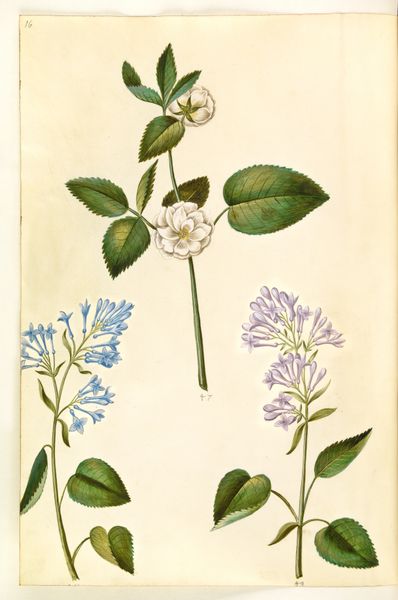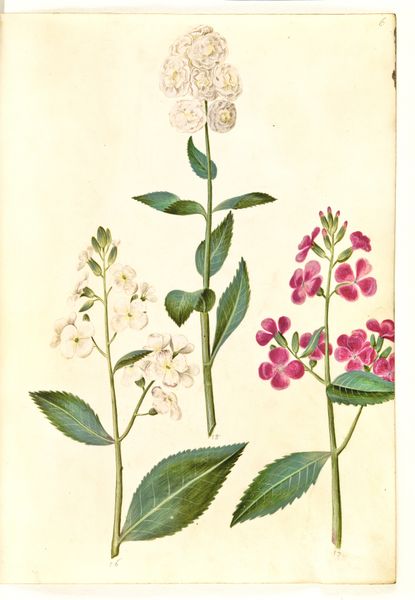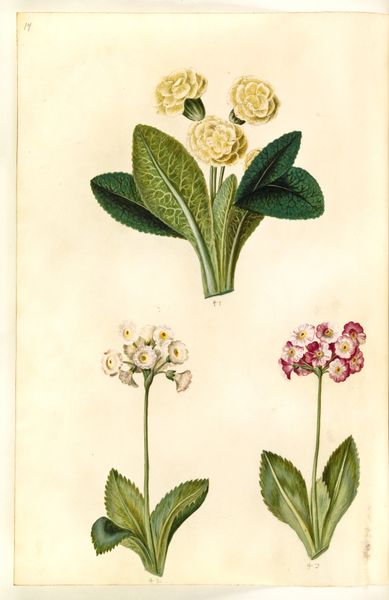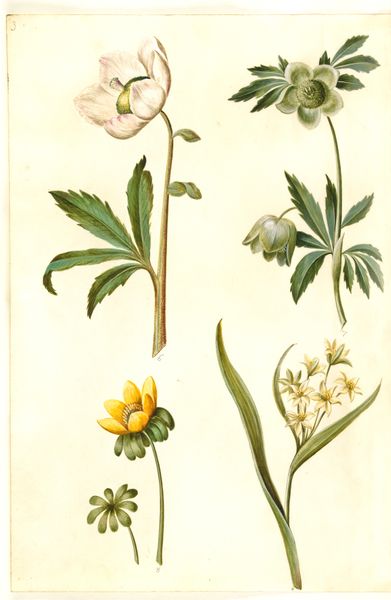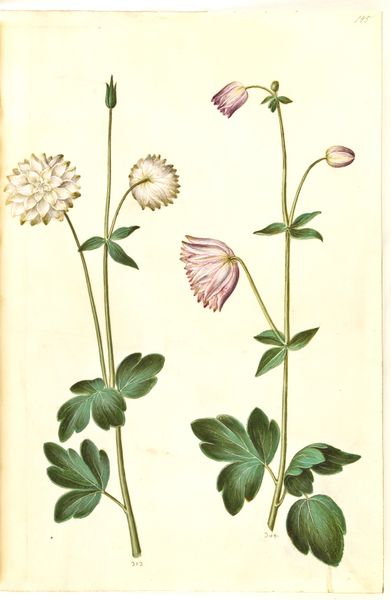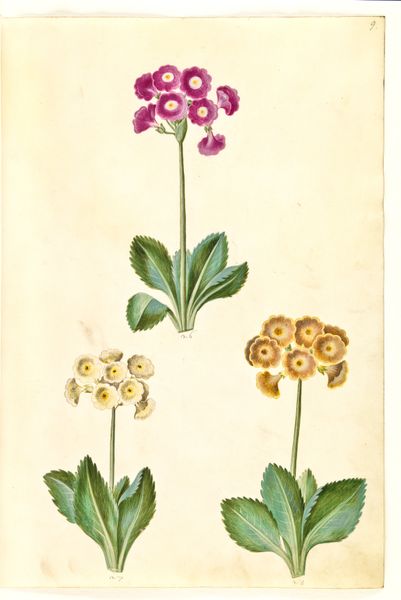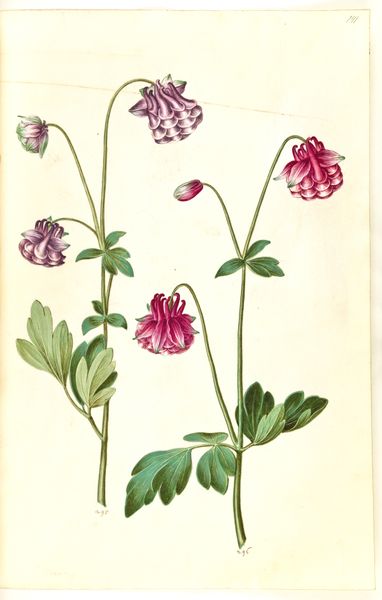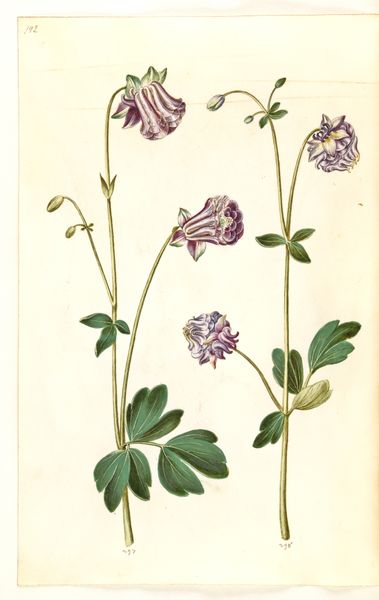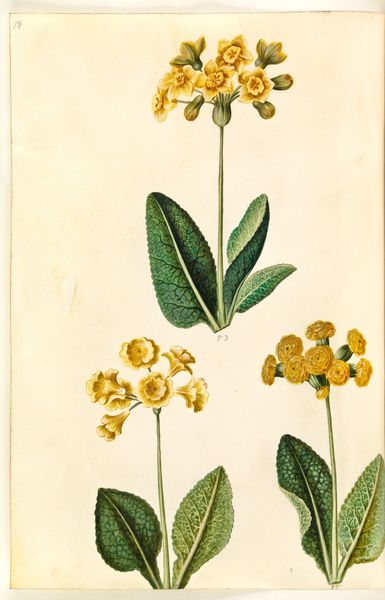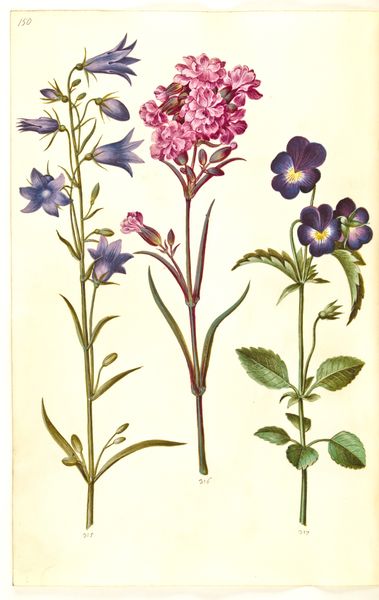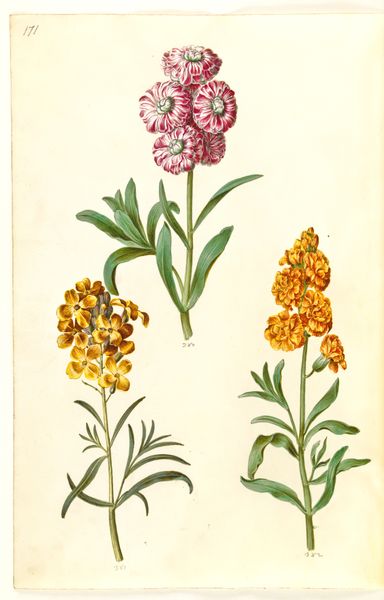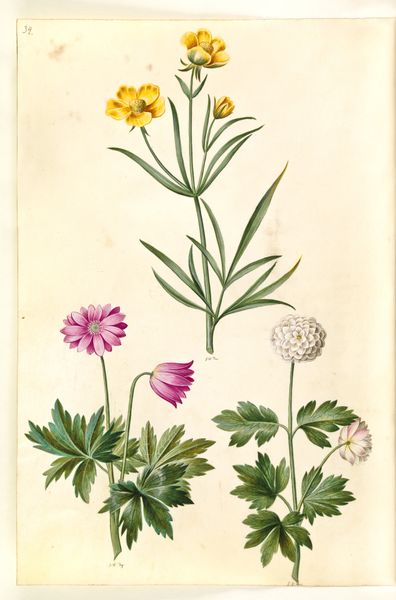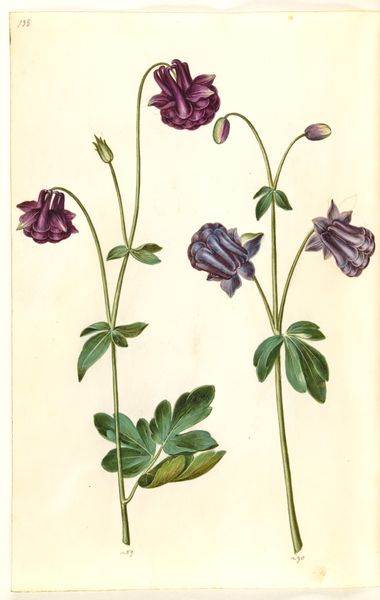
Viburnum opulus (almindelig snebolle); Jasminum officinale (læge-jasmin); Cytisus scoparius (almindelig gyvel) 1635 - 1664
0:00
0:00
drawing, gouache
#
vegetal
#
drawing
#
natural world styling
#
gouache
#
food illustration
#
floral photography
#
botanical photography
#
food art
#
watercolour illustration
#
food photography
#
botanical art
#
warm toned green
Dimensions: 375 mm (height) x 265 mm (width) x 85 mm (depth) (monteringsmaal), 358 mm (height) x 250 mm (width) (bladmaal)
This botanical illustration of Viburnum opulus, Jasminum officinale, and Cytisus scoparius was created by Hans Simon Holtzbecker in the 17th century, a time when the study of botany was closely linked to medicine and alchemy. Holtzbecker’s delicate watercolor offers a window into the early modern world's fascination with the natural world. These aren't just pretty pictures; they reflect a culture grappling with new scientific discoveries, and an ever-growing global trade which brought previously unseen flora to Europe. Think about the role of flowers in the 17th century, often symbolizing virtues, emotions, and social status within a rigid social hierarchy. The botanical style focuses on scientific accuracy, yet we can't ignore the aesthetic choices, or the soft, luminous quality of the watercolors which evoke a sense of wonder. Holtzbecker’s illustration serves as both a scientific record and a cultural artifact, connecting us to a time when art, science, and society were deeply intertwined. The illustration reminds us of the rich history embedded in even the simplest representations of the natural world.
Comments
No comments
Be the first to comment and join the conversation on the ultimate creative platform.
